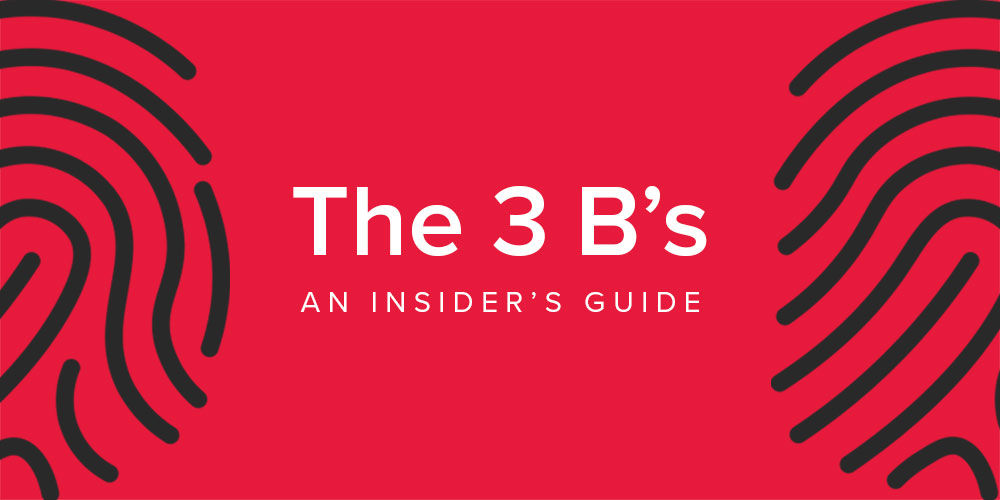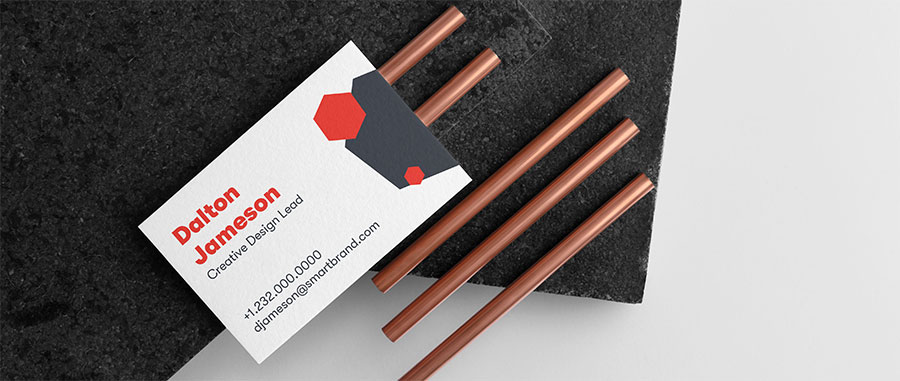What’s The Difference Between Brand, Branding, and Brand Identity? An Insider’s Guide.

When you’re building a business, there are a lot of words and concepts that get thrown around—and a lot of them sound so similar, you might assume they’re interchangeable. Brand. Branding. Brand identity.
But the truth is, there are major differences between the concepts of brand, branding, and brand identity (also known as “the three B’s”). And if you want your business to thrive, you need to understand those differences—and how each plays into building a successful operation.
So what, exactly, are those differences? What are the main characteristics of the three B’s? And how can you use your brand, branding, and brand identity to break through the noise, connect with your ideal audience, and take your business to the next level?
Content
- Brand vs. Branding vs. Brand identity
- Establishing a strong brand
- Building your brand identity
- Locking in your branding strategy
- Use the 3 B’s to build your brand puzzle
Brand vs. Branding vs. Brand identity
First things first—what, exactly, are the three B’s?
- Your brand is who you are as a company—and, just as importantly, who your audience perceives you to be as a company. It’s your products, your services, your mission, and your values.
- Branding is the act of shaping that brand perception; it’s the actions you take to make sure the way your audience perceives you is in alignment with the way you want to be perceived.
- Your brand identity is all the elements you create (like your logo, tagline, colors, business card, and website) to communicate your brand to your audience.
Still not clear on the difference between the three? Here’s an example.
Let’s say you’re launching a new financial services company, and your mission is to provide the highest level of customer service and transparency to your customers. That’s your brand.
So, to promote your financial services company, you host a series of events where you educate potential customers on common financial issues, how to avoid them, and how your company can help them throughout the process. When a potential customer attends those events, it’s going to shape the way they perceive your company and get them on board with your brand. So, the actions of planning and hosting the events? That’s branding.
Finally, you need a concrete way to express your brand. So, you get your brand elements in place, from your logo to your website, your business cards to your brand color palette. All of those elements come together to form your brand identity.

The three B’s are like individual pieces of a larger branding puzzle—and if you want to build a successful business that truly connects with your audience, you need all three. Without a brand, there’s no branding—but without branding, there’s no brand. Without a strong brand identity, your branding falls flat—and your brand struggles as a result.
The point is, each B builds on the other. You need all three to complete the puzzle—and to build a successful brand.
“A brand is a person’s perception of a product, service, experience, or organization.”
Now that we’re clear on the differences between brand, branding, and brand identity, let’s take a closer look at each of the three B’s—and how to use all three to build your brand:
Establishing a strong brand
As mentioned, your brand is who you are as a company—and you can’t begin to develop a branding strategy or design your brand identity without first defining who you are. Think of your brand as the foundation; you need to have it in place before you can start building your branding or brand identity.
Your brand consists of a few key elements:
- Your mission. What is your company here to do? What kind of impact do you want to have on your customers, your industry, the world?
- Your values. How are you going to accomplish those goals? What does your company stand for? What values drive what you do every day—and how you do it?
- Your point of difference. Chances are, there are plenty of other companies doing what you’re doing. So how are you different? What makes you unique?
- Your products and/or services. You can’t build a brand if you don’t have anything to offer your customers—so what kinds of products or services are you going to deliver? How are you going to add value to your customers?
So, for example, let’s say you’re launching a business consulting firm for digital entrepreneurs. Your core brand elements might look something like this:
- Mission: To make it easier for entrepreneurs to launch, establish, and grow their digital businesses.
- Values: Integrity, passion, commitment to excellence
- Point of difference: Our company was launched by a team of digital entrepreneurs with over 20+ years of experience; unlike other business consulting firms, we understand the unique challenges facing entrepreneurs launching and building businesses in the digital space—and that’s because we’ve done it
- Products and/or services: One-on-one consulting, website development, sales coaching
The details will change depending on what kind of brand you’re trying to build. The point is, you need to establish your brand foundation before you start designing your branding elements or developing your branding strategy—because that foundation is what’s going to drive the rest of the branding process.
Building your brand identity
Once you know who you are as a brand, it’s time to bring that brand to life. And the way that you do that? Building your brand identity.
There are a number of must-have elements that make up your brand identity, including:
- Business name. Shakespeare might not have put much stock into names, but the truth is, what you decide to call your business is going to play a huge part in how successful it is. When choosing a name, make sure you land on something that’s catchy, stands out from the competition, and represents who you are as a brand.
- Logo. Your logo is the design element that your customers will come to recognize as a symbol of your brand. It’s like the face of your company—and when designing your logo, you want to make sure to put your best face forward.
- Brand color palette. Color is a powerful thing; people have strong associations with color, and when you understand those associations, you can use them to your advantage when building your brand color palette (for example, red is shown to make people feel excited—making it a great choice for retail businesses).
- Fonts. The fonts you use in your designs will say a lot about your brand. Serif fonts tend to read as traditional and corporate, sans serif fonts as modern and sophisticated, and script fonts as either feminine, formal, or whimsical (depending on the font choice and context).
- Brand voice. You want to make sure that your brand voice matches your brand. So, for example, if you own a traditional law practice, you would want a voice that sounds authoritative and professional. On the flip side, if you’re launching a surf brand, a corporate voice would feel too buttoned up—and you’d want to go a more laid-back and casual tone.
- Website. It doesn’t matter who you are, what you do, or what kind of brand you’re trying to build—a well-designed website is a non-negotiable component of any brand identity.
- Business cards & collateral. Your business cards are the one piece of your brand identity you leave behind with your colleagues and customers; they’ll continue making an impression long after your conversation is over—so you want to make sure they’re well-designed and on-brand. (Need help with your business cards? We’ve got you covered. Get in touch and we’ll help you find the best business card solution for your brand.)

Once you have your brand identity defined and designed, you’ll want to assemble all the key elements into a brand style guide. Having all of your key branding elements in one place will make it easy for your team to get on the same page—and to make sure all of your branding efforts are in line with your brand identity.
Locking in your branding strategy
You’ve defined your brand. You’ve designed your brand identity. Now, it’s time to move into action—and to get branding.
Again, branding is defined as any actions you take to shape the perception of your brand in the marketplace. So defining your brand identity and designing your key branding elements (like designing your business cards, logo, and website)? That’s branding.
But that’s just scratching the surface. If you really want to make an impact with your brand, you need to take your branding strategy to the next level.
Now, there’s no one-size-fits-all solution for branding; the most effective branding strategy is going to depend on your brand and your target audience. So, for example, let’s say you’re a beauty brand that’s targeting millennials. You want to be perceived as cool and trendy—so part of your branding strategy might include partnering with influencers on social media. If you’re building an insurance company targeting people nearing retirement, a social media influencer campaign probably isn’t going to give you the most branding bang for your buck—and you’d be better off shaping your ideal customers’ perception of your brand in other ways (like by hosting educational events at local retirement communities).
The point is, if you want your brand to connect with your customers, you have to take active steps to shape the way those customers perceive your brand—and the way to make the most out of those steps? Forming a cohesive, long-term branding strategy.
Use the 3 B’s to build your brand puzzle—and take your business to the next level
Because the three B’s sound so similar, it can be hard to differentiate between them—and how each impacts your business. But now that you know the differences between brand, branding, and brand identity—and, more importantly, how to use each to take your business to the next level—you have all the pieces of the puzzle. Now, all that’s left to do? Get out there, take those puzzle pieces, and use them to build a successful brand!
Want more actionable tips to help take your branding, design, and marketing knowhow to the next level? Subscribe to our newsletter—delivered straight to your inbox once a month.